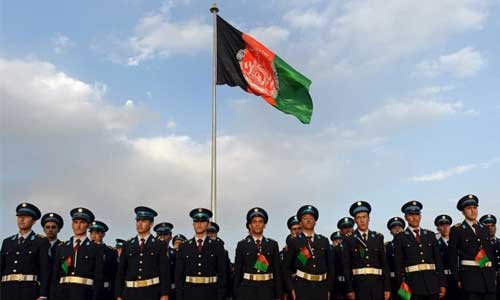After the downfall of Taliban in 2001 in Afghanistan, the country started its journey towards a republican system of government. Bonn Agreement was the first step; however, the milestone was the ratification of a new constitution by a Loya Jirga in 2004. As per the constitution, the country was announced to be an Islamic republic and Hamid Karzai was elected as the president of the country through popular vote. Since that presidential election and the one that was conducted last year, what has been the achievement in the arena of the republic system or that of the so-called democracy in Afghanistan? The answer can be best sought after an observatory look at the last election itself.
The fourth presidential election in Afghanistan was conducted in September, 2019. Afghanistan Independent Election Commission (IEC) announced the result of the election after a delay of nearly five months. That took more time than the candidates were allowed for their election campaign; however, it could not break the record of the parliamentary election results before it that took almost seven months. At the same time, it did considerable damage to the authenticity of the process of result compilation.
The winning team was announced to have secured 50.64 percent of all the votes, which was enough when the second highest percentage scored was only 39.52 percent. But, we would need to see in between the numbers to get a true picture of what this ‘majority’ actually meant: 50.64 percent was only 923,592 votes, out of the total 1.8 million casted votes that were counted; while the total registered voters were 9.6 million.
Now, the total population of Afghanistan is believed to be around 35 million, though there has never been a comprehensive scientific census in the country, though its necessity has largely been felt in a multi-ethnic society like Afghanistan. Coming back to the point: President Ashraf Ghani was, in fact, declared as the winner of the election with the votes of only 9.6 percent of the total registered voters and 2.6 per cent of the total population of Afghanistan. This clearly shows the inability of the most important democratic institution – election – to represent the will of the majority of the people in Afghanistan.
Apart from drawbacks in election, there are many other issues within our political system that may not help it attain stability. Afghanistan’s political system since 2004 has been based on a centralized presidential system. The system has mostly benefited a small group of elite, and not the people as a whole. This has also frustrated other groups of elite who have only witnessed the authority slipping out of their hands, as they have been given titular positions in the government. Nonetheless, the ruling elite has been the actual holder of whatever power the government has held.
Though there have been slogans like “Nation Building”, “State Building”, “National Reintegration”, and “National Reconciliation” by the United States as a part of its political intervention after the formation of the so-called democracy in Afghanistan, they have never addressed the actual issues lying at the core of conflicts. In fact, all the international interventions in Afghanistan from the Great Britain’s in 19th century to that of US, have supported a centralized government so that they are able to exercise control, neglecting the demands of the socio-political context of the country that so evidently urges for a decentralized political system. So much the narrative for a centralized political system has been propagated in Afghanistan that there is no margin left for serious discussions on other forms of government – even a slight mention of a federal system is considered a treason by the ruling elite. However, a federal system has the potential to address the political needs of the Afghan society to a large extent.
Even if the possibility of forming a federal system seems a distant cry, that of a decentralized system with more power to provinces, represented through a more authoritative parliament does not seem so. In fact, if the promises made during the formation of National Unity Government were fulfilled, the journey towards such a system could have already started.
But the major question at this instance would be: “How can a decentralized political system compensate Taliban within its fold, if Taliban reach to some sort of agreement to accept the republican system in Afghanistan?” The fact is that today Taliban control 15 percent of the districts in Afghanistan, while threatening 29.2 percent of the others. Even some of the people in these areas are in favor of Taliban and their way of governance. Allowing Taliban political representation and government in such areas under a republican constitution can help start a journey towards a stable political system, which is only possible if the ruling elite in the country be more open-minded towards a decentralized system.
Thus, the instability and uncertainty that exist within Afghanistan’s political scenario is in fact the eruption of what has already been cooking within the volcanic mountain of unstable and incompatible political system. Temporary solution of the discrepancies will only lead to a short era of compromise, not a panacea for major causes of conflict.
Home » Opinion » The Republican System in Afghanistan
The Republican System in Afghanistan
| Sajjad Aasim

